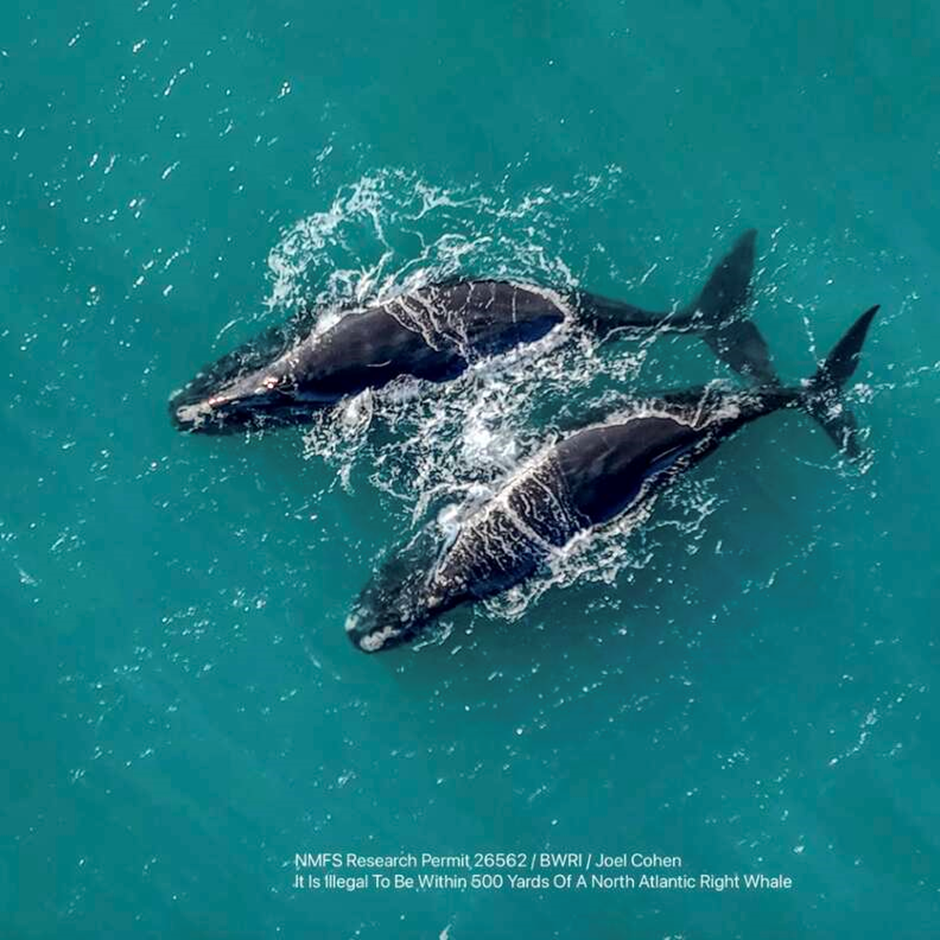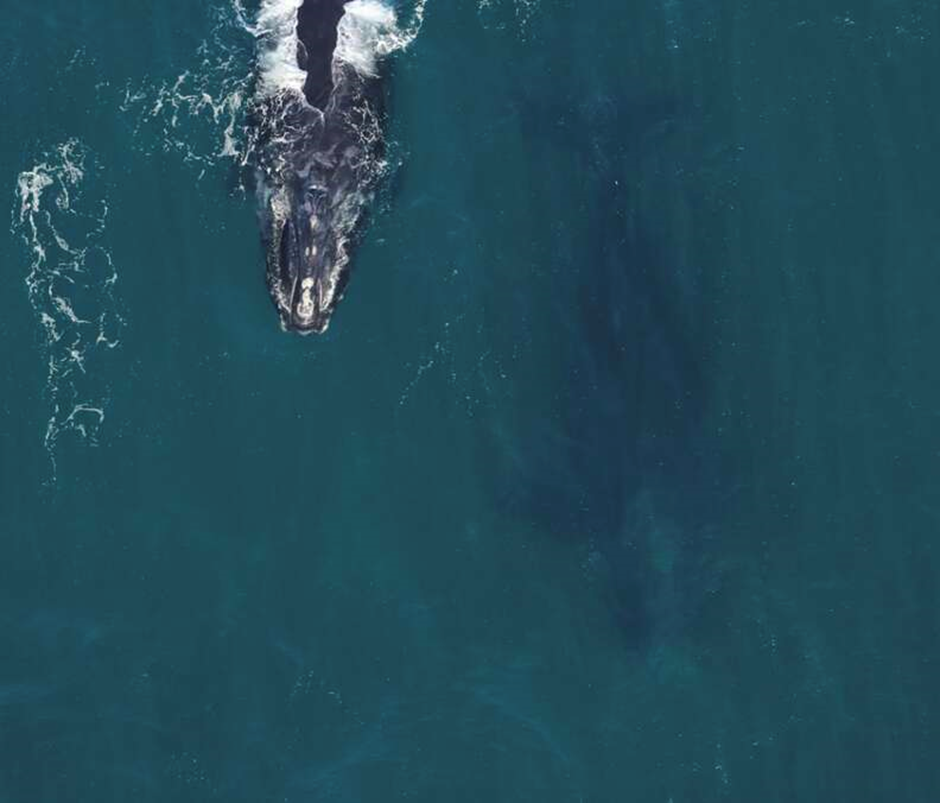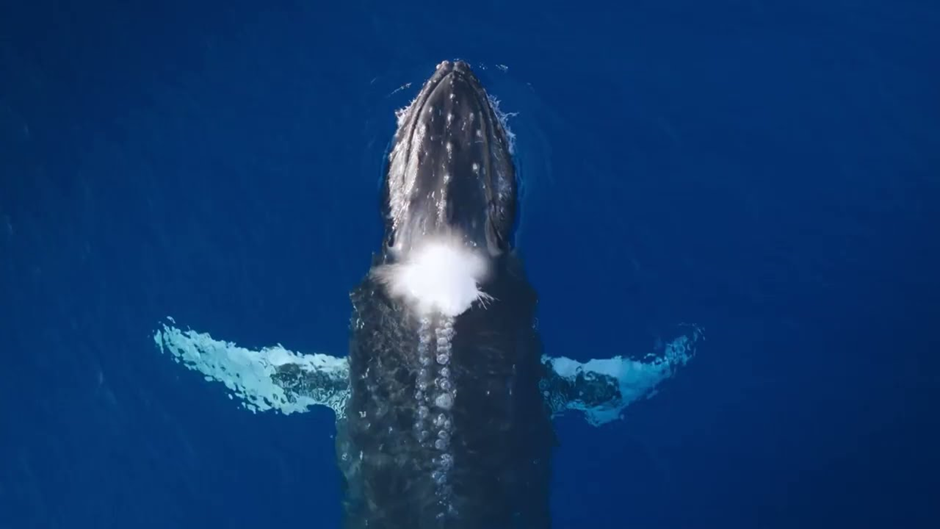The ocean, for Calypso, wasn’t a boundless place of freedom; it was a loud, dangerous landscape. At over forty feet long, she was immense, a creature built for the deep, cold majesty of the North Atlantic. Yet, she was also one of the rarest things on Earth. She was a North Atlantic Right Whale, and when Calypso swam, she carried the knowledge that there were barely three hundred of her kind left in the entire world. Her very existence felt like a whisper against the roar of modern life.
Her mother had taught her the migration routes—the cool, plankton-rich feeding grounds near Canada, and the warmer, shallower birthing bays off the coasts of Florida and Georgia. These were the paths her ancestors had followed for millennia, but for Calypso, they were maps riddled with invisible traps.
Her biggest fear wasn’t predators; it was the sound. The constant, grinding, low-frequency sound of the shipping lane. It was a heavy, inescapable drone that vibrated through the water, masking the quiet clicks and calls of her own kind. It was the sound of danger.
On shore, in a small, battered research vessel perpetually smelling of diesel and salt, sat Dr. Elena Rodriguez. For Elena, the entire Right Whale population had been distilled into a single, agonizingly slow tracking dot on her radar screen: Calypso. Elena’s job was not just to count them; it was to try and listen to their silence, to anticipate every threat coming at them from the human world. Every single day, she woke up feeling the heavy, fragile burden of an entire species resting on her shoulders.

Calypso was three years old, just barely an adolescent, and already she carried the scars of her species. Faint white lines crisscrossed her back—remnants of a fishing line she’d managed to shake off a year ago, an injury that had cost her months of energy to heal. Her species is a slow swimmer, and unlike other whales, they feed close to the surface, making them heartbreakingly vulnerable to ship propellers and tangled ropes.
She was currently traveling south, heading into what should have been the safer waters of the mid-Atlantic, but the noise here was relentless. She had to constantly adjust her course to avoid the huge container ships, massive steel mountains carving through the ocean, barely slowing for anything. She navigated by instinct, her massive, dark body cutting through the blue.
One afternoon, the danger became horrifyingly immediate. Calypso was lazily skimming the surface, gorging on a thick bloom of copepods, when the high-pitched whine of an approaching engine cut through the water. It wasn’t the slow drone; it was the fast, sharp sound of a pleasure craft, moving quickly and erratically. She threw her body downward, plunging deep into the murk, her heart rate spiking. The boat passed directly overhead, the prop wash nearly rocking her off balance.
Back on the ship, the alarm bells went off in Elena’s tiny cabin. Calypso’s movement pinged a distress pattern—a sudden, deep dive followed by frantic swimming. Elena felt a cold rush of nausea. She knew exactly what that meant.
“She needs to get clear of the main route, now,” Elena muttered to her team, her voice tight. “We have to signal the exclusion zone. We’re losing them in the noise!”
The next few days were a blur of tension. Elena’s team worked tirelessly with the Coast Guard and marine authorities, sending out warnings, rerouting small traffic, and frantically trying to create a temporary zone of relative quiet for Calypso.
And slowly, miraculously, it worked.
Calypso, exhausted but unharmed, finally swam into a vast, designated sanctuary zone. The background noise dropped. The intense, deafening sound of human commerce faded to a gentle hum. For the first time in weeks, Calypso could actually hear the quiet, echoing calls of another Right Whale a few miles away—a male, one of her few remaining family members. She let out a soft, booming acoustic call in response, a sound of profound relief.
Elena, watching the dot on her screen settle into a slow, steady rhythm, finally allowed herself to lean back and take a real breath. The threat had passed, for now. It wasn’t a victory; it was merely a reprieve.

The story of the Right Whale isn’t about grand rescues or a sudden boom in population. It’s about this quiet, daily persistence. It’s about the fact that a species on the absolute brink still has the will to live, to migrate, to reproduce, even when the odds feel impossible. It’s about Calypso, swimming steadily into the future, and about Elena, sitting in a tiny boat, refusing to stop listening for her faint, precious signal. The Right Whales are hanging on, carrying their ancient history across the waves, sustained by the hope—and the hard work—of the very few people who choose to fight for their right to remain in the ocean. They are not giving up, and because of that, we can’t either.


